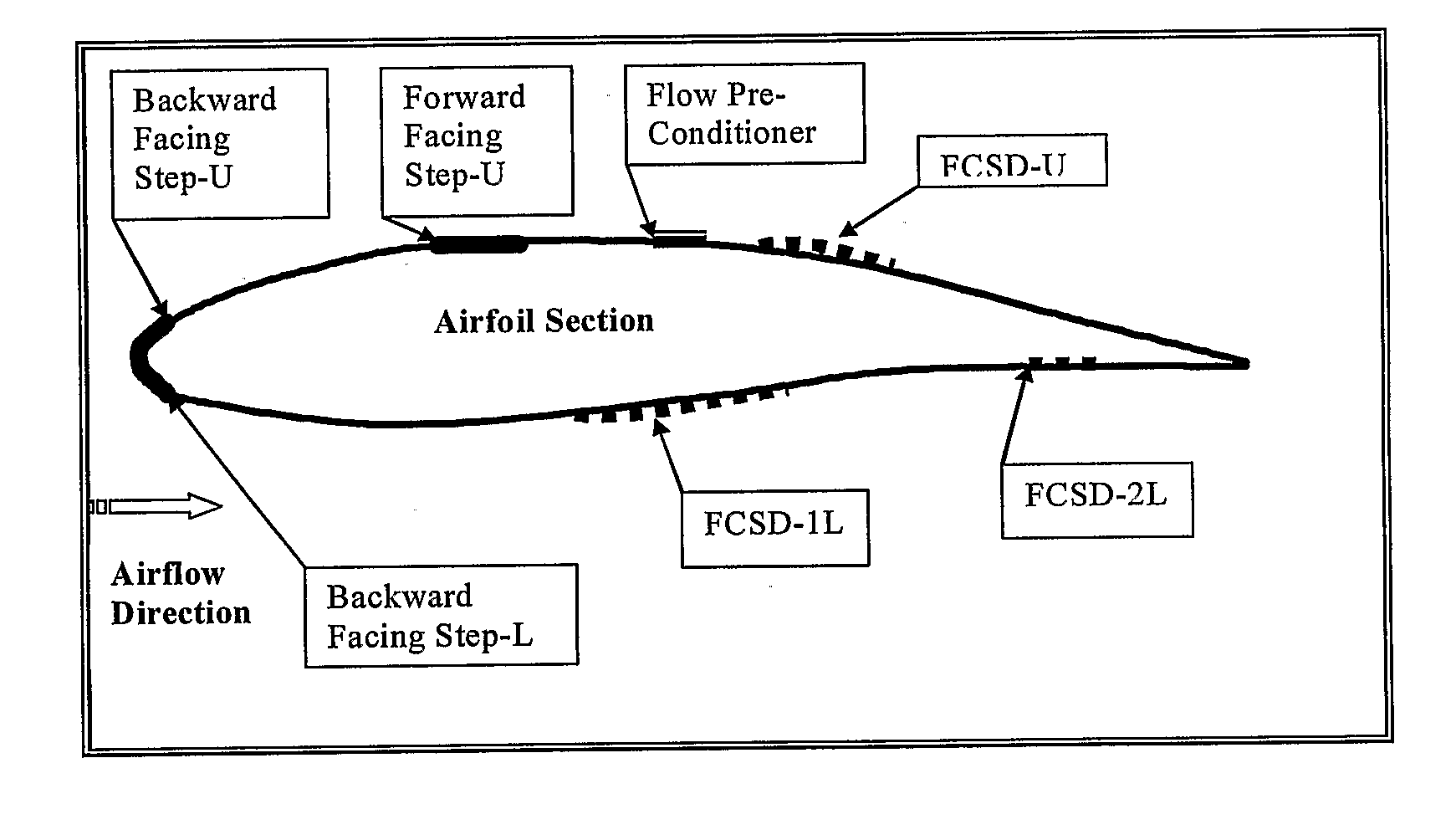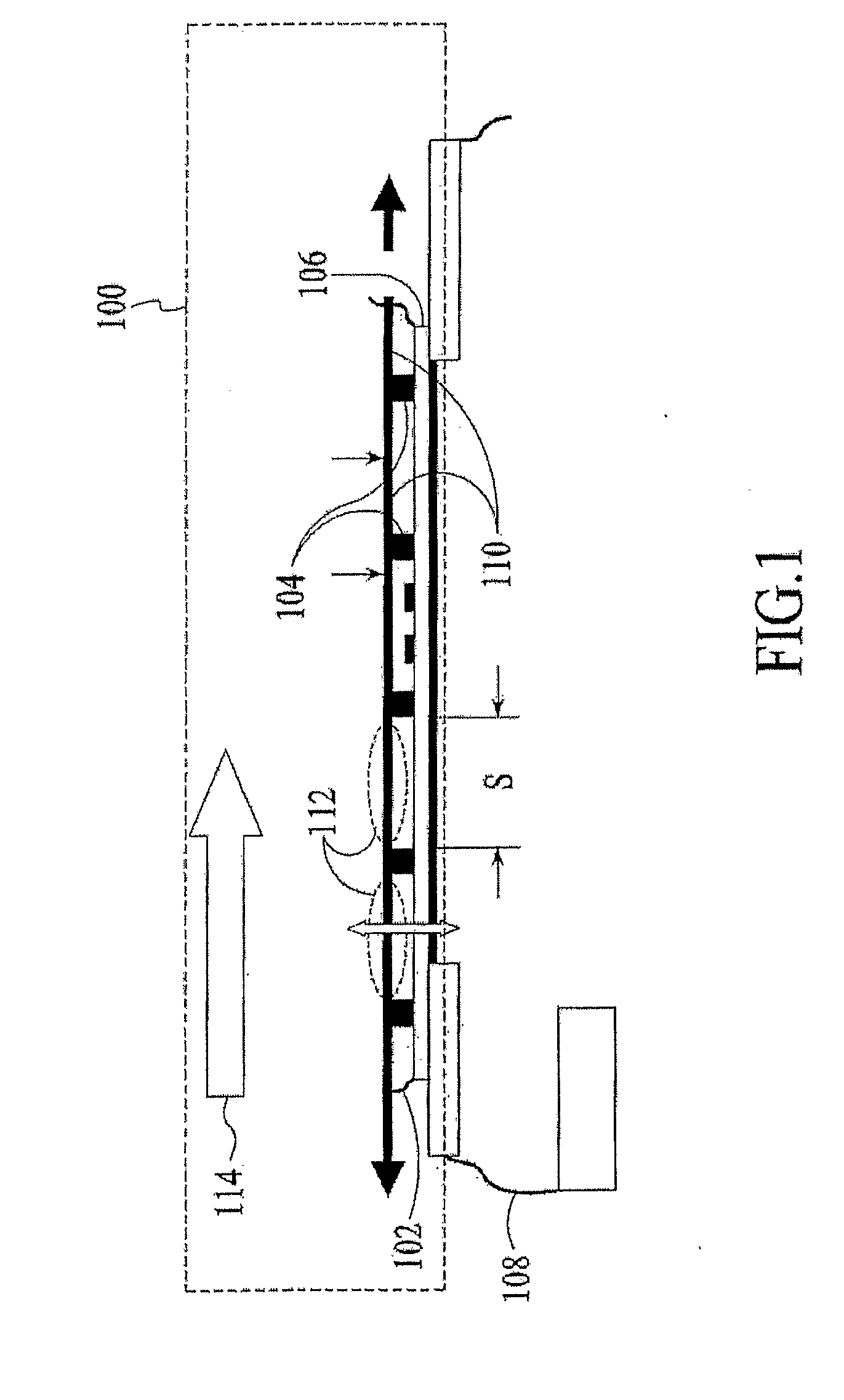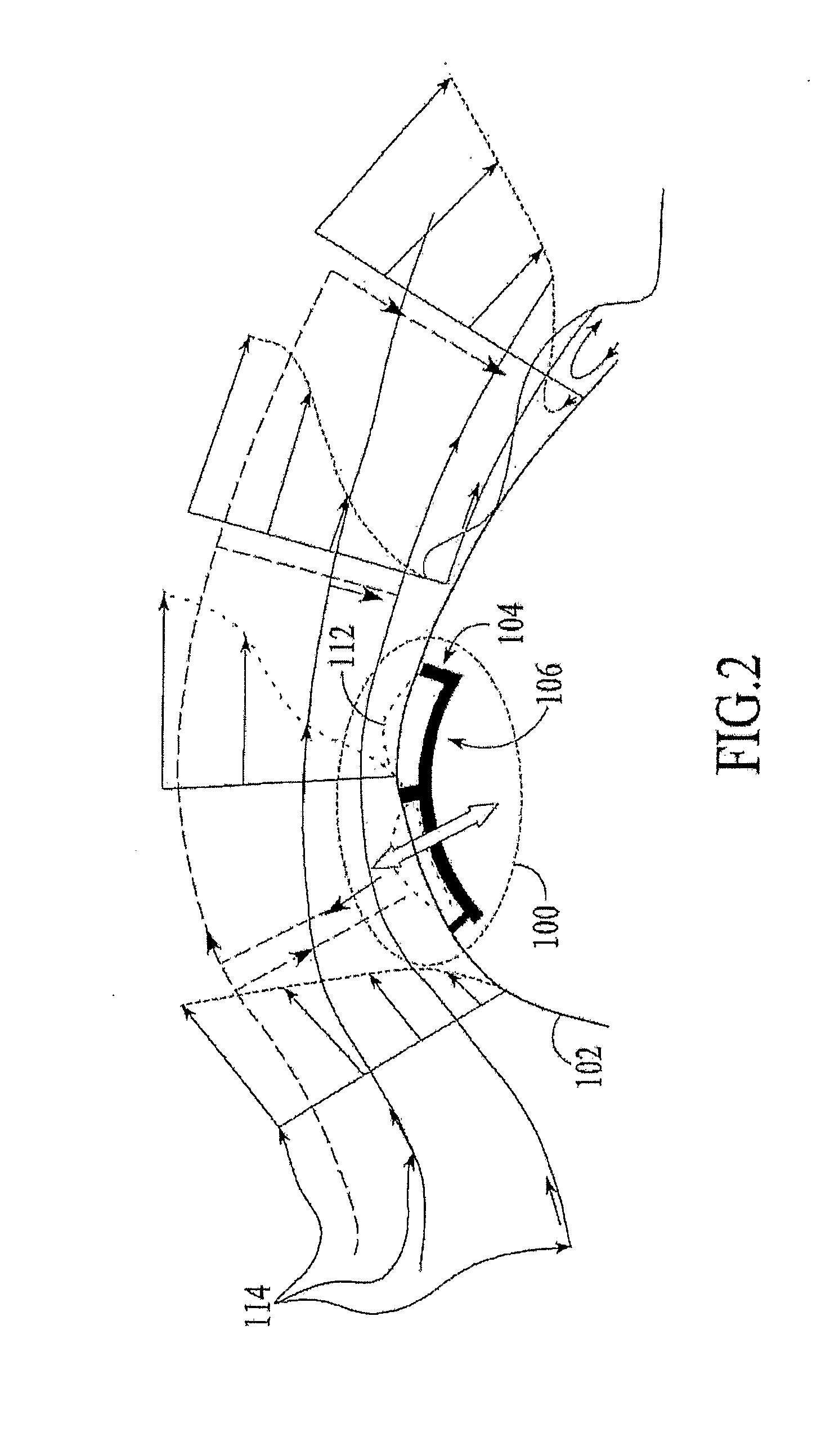Method of Reducing Drag and Increasing Lift Due to Flow of a Fluid Over Solid Objects
a fluid flow and flow technology, applied in the direction of airflow influencers, roofs, transportation and packaging, etc., can solve the problems of generating additional drag due to lift generation, exacerbate pressure losses in regions, and objects such as wings, so as to reduce drag, reduce friction drag, and increase lift
- Summary
- Abstract
- Description
- Claims
- Application Information
AI Technical Summary
Benefits of technology
Problems solved by technology
Method used
Image
Examples
Embodiment Construction
[0046]The present invention relates to the use of devices capable of spectrally altering turbulence to reduce flow induced drag, enhance flow induced lift and enhance flow-surface heat transfer without increasing losses.
[0047]In the last application it is in the field of heat exchangers, and more particularly to a flexible composite surface for enhancing heat transfer in heat exchanger passages while minimizing the drop in flow pressure. The following description is presented to enable one of ordinary skill in the art to make and use the invention and is provided in the context of a patent application and its requirements. Various modifications to the preferred embodiment and the generic principles and features described herein will be readily apparent to those skilled in the art. Thus, the present invention is not intended to be limited to the embodiment shown but is to be accorded the widest scope consistent with the principles and features described herein.
[0048]Generally, a syst...
PUM
 Login to View More
Login to View More Abstract
Description
Claims
Application Information
 Login to View More
Login to View More - R&D
- Intellectual Property
- Life Sciences
- Materials
- Tech Scout
- Unparalleled Data Quality
- Higher Quality Content
- 60% Fewer Hallucinations
Browse by: Latest US Patents, China's latest patents, Technical Efficacy Thesaurus, Application Domain, Technology Topic, Popular Technical Reports.
© 2025 PatSnap. All rights reserved.Legal|Privacy policy|Modern Slavery Act Transparency Statement|Sitemap|About US| Contact US: help@patsnap.com



